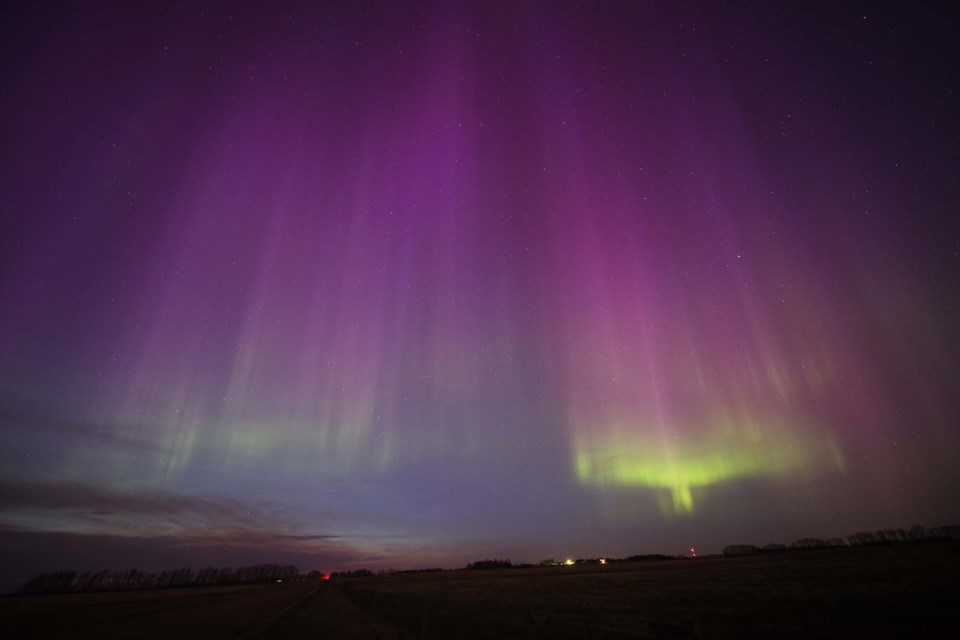St. Albert stargazers can expect glowing skies and a spotted sun this weekend as astronomers rally to celebrate all things space.
May 18 is International Astronomy Day. Established in 1973, this day aims to raise public interest in astronomy, and is observed twice a year on the Saturday closest to the first quarter moon between April and May, and the Saturday closest to the first quarter moon between September and October.
St. Albert-area astronomers will once again be at the Telus World of Science Edmonton observatory that day with their telescopes to show guests the wonders of the universe.
Volunteers with the Royal Astronomical Society of Canada’s Edmonton branch will be onsite from around 1 p.m. to 5 p.m., and 7 p.m. to midnight to show guests the sights, said Frank Florian, senior manager of planetarium and space sciences at the Telus World of Science.
Sun time fun time
The big story for this year’s Astronomy Day is the sun, said St. Albert astronomer Bruce McCurdy, who plans to volunteer for the Telus World of Science celebrations.
“There’s a lot going on upon the sun right now,” he said, with plenty of sunspots, solar flares, and coronal mass ejections happening, all of which you can safely view with the right equipment.
Florian explained weather on the sun goes from calm to stormy over an 11-year cycle — part of a longer 22-year cycle driven by interior circulation that causes the sun’s magnetic poles to flip every 11 years.
“This year is the peak of the solar cycle,” Florian said, so we’re seeing all kinds of activity on the sun’s surface.
One such phenomenon is sunspots. Sunspots are thought to form from tangles in the sun’s magnetic field caused by its poles and equator rotating at different rates, Royal Museums Greenwich reports. These tangles create zones of high pressure that shove away hot gases, making the zones cooler and creating a dark spot on the sun’s surface. These sunspots can be more than 100 times the width of Earth, and have been known to last months.
Sunspots are often linked to solar flares and coronal mass ejections (CMEs), which are big gobs of energy and charged particles spat out by the sun, Florian said. When those particles hit the Earth’s magnetic field, they slam into gas molecules and cause them to glow, creating the spectacular light show known as the aurora borealis.
“There’s probably going to be aurora almost every night for the next little while,” Florian said, as there were a whole bunch of flares going off on the sun right about now.
Scientists keep a close eye on solar flares and CMEs because they can fry satellites and power grids, McCurdy said. One gigantic flare in 1859 caused auroral displays from the poles to the tropics and made telegraph lines go haywire.
“If we had a similar [solar] storm today the impact would be a whole lot worse,” McCurdy said.
McCurdy said residents can safely view sunspots on the sun using solar eclipse glasses or telescopes and binoculars equipped with special filters. (Looking at the sun without protective glasses or filters can lead to blindness.)
Florian said volunteers will have telescopes at the Telus World of Science equipped for safe sun-watching on May 18. Call 780-451-3344 for details.




